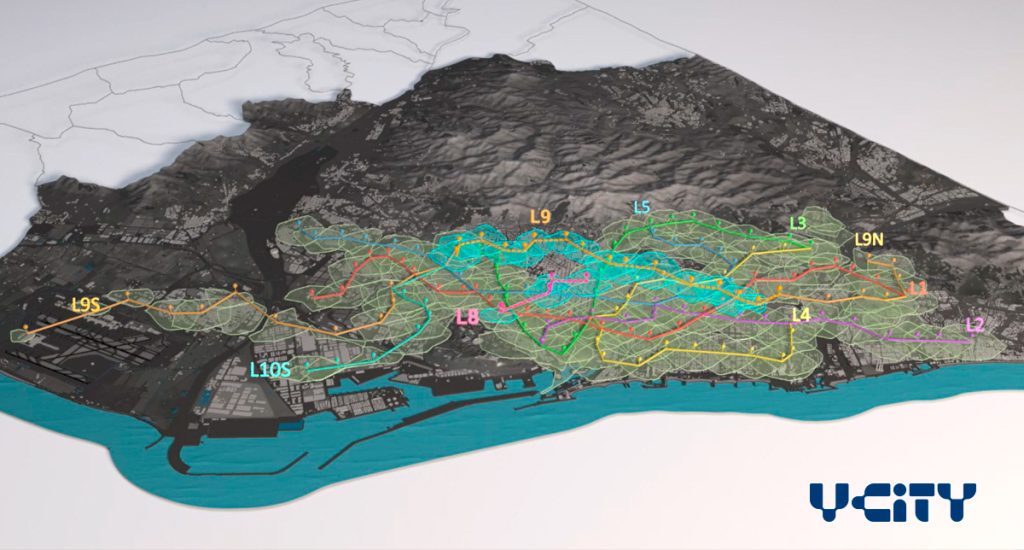"Local digital twins can promote transparency and accountability in urban decision-making"
Imagine exploring a city and simulating urban interventions with just a few clicks. This is the promise of local digital twins—a virtual mirror reflecting the heartbeat of urban spaces. In a world where the availability of data offers us valuable insights, these digital replicas offer cities a powerful lens through which to envision their future and navigate the complexities of modern urban life.
Patricio Reyes is the head of Urban Data Science within the Data Analytics and Visualization Group at the Barcelona Supercomputing Center. He is currently leading vCity ( https://www.vcity.tech ) a project to develop digital twins for cities. Patricio explains in this interview the potential of Local Digital Tools in promoting transparent, informed decision making to design the cities of the future.
What are the primary reasons why cities should consider implementing a Local Digital Twin? What key benefits can they expect?
Generally, one of the great benefits—and also one of the great challenges—of Local Digital Twins (LDTs) is their ability to monitor the city's "pulse", serving as a tool for understanding the pulse of the neighbourhoods, which is key to urban decision-making.
LDTs should be included in cities' digitalisation plans, within the process of transparency and support for urban decision-making. They should be viewed as tools designed to integrate different layers of information. In addition, because of their evidence-based approach, LDTs can effectively promote transparency and accountability in urban decision-making.
Can you explain how a Local Digital Twin works and its significance in urban planning and management?
In very simple terms, an LDT is a virtual replica of the city designed to simulate hypothetical interventions. This allows us to analyse and compare scenarios for a review of the impacts of each intervention by virtualizing the "trial and error" process, bringing obvious benefits to cities and the urban planning process in particular.
Given the impact on public policies, urban planners, and by extension the LDT, need a broad and diverse view of the city. By combining information, the LDT provides models that help understand urban processes and generate relevant insights.
Could you elaborate on the practical steps involved in developing and implementing a Local Digital Twin for a city? What role do different actors play?
As mentioned earlier, a crucial part of a Local Digital Twin is its information about the city to understand its dynamics. Sensor data alone is not sufficient. Our approach emphasises understanding what the inhabitants need and want from their city. The diversity of information allows problems to be addressed from different perspectives.
In addition to information, another important part of a Local Digital Twin is the models that generate relevant insights based on the collected data. All of this is presented on a platform where urban planners can interact, ask questions, and create "what-if scenarios" to review the implications of each in their city.
Thus, the citizens, through participatory processes, share their vision of the city they want, which is incorporated into the LDT. In turn, urban planners and policymakers use the LDT to simulate multiple intervention possibilities.
How does the integration of various data sources and technologies play a role in the effectiveness of a Local Digital Twin? How does the concept of data privacy and security factor into the development and use of Local Digital Twins?
This is a very important topic that we believe should be integral to the development process of Local Digital Twins. At the Living-in.EU Digital Forum held in Rotterdam a few months ago, it was emphasised that digitalisation must be people-centred.
This involves, for example, understanding that people need to comprehend the processes by which decisions are made in their city. Initiatives like the Algorithm Register (https://www.algorithmregister.org/), promoted by the Living-in.EU community, aim in this direction. Similarly, LDT models must be as transparent as possible to the public, allowing the community to audit the process. Here, transparency plays a fundamental role.
What are some successful examples or case studies of cities that have effectively leveraged LDTs to enhance their urban environments?
While it may not be the most impactful example, it is quite illustrative: Traffic control centres help cities manage dynamic, multifactorial processes that are difficult to analyse without technology. Authorities can understand congestion problems and offer solutions, thanks to their broad view of the city.
Looking ahead, what do you see as the future trends and developments in the field of Local Digital Twins for cities?
In the future, I would like to see the democratisation of Local Digital Twins adoption by cities. LDTs will be understood as part of the process of "thinking the city," not just as a trendy technology. Smart cities are not those with the most sensors but those that know how to make well-considered decisions with and for the citizens.
Image: Proximity Cities. vCity & BSC Data Viz Group (Guillermo Marín – Jerónimo Calderón)








